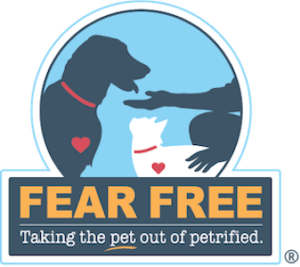Bretaigne Jones, DVM, MS, FFCP (Veterinary)
We see obese and overweight pets every day. Excessive body weight (BW) is the most prevalent disease in dogs and cats today, with 56 percent of dogs and 60 percent of cats being overweight (defined as 10 to 20 percent over ideal BW) or obese (greater than 20 percent over ideal BW).1
This situation impacts not only pets but also their families and the veterinary teams who care for them. Unlike some other clinical diseases, the harm caused by excess weight and the potential obesity-related diseases that lurk inside cute, cuddly, “pleasantly plump” four-legged family members are not readily apparent to their owners.
The impact for the dog or cat is straightforward: poor health and quality of life. Every organ system in the body is negatively affected by excess body weight and growing fat stores. Far from being a benign fat storage tissue, adipose tissue (stored fat) is an active source of inflammatory compounds and hormones that, in excess, can interfere with normal healthy metabolic and endocrine functions. Left unchecked, it results in insulin resistance and, particularly in cats, diabetes mellitus. Other common health issues include orthopedic conditions; renal, cardiac, respiratory, urinary, dermatologic, and immune disorders; and cancer.
The effect on the pet’s family includes emotional, financial, physical, and time concerns. These apply not only to the news that their pet needs to lose weight but also to their attempts to address the issue.
- Emotionally, they may feel defensive, guilty, and judged as being a bad pet parent; unaware of how they could have prevented this situation; and dread as they face taking on this long-term treatment.
- Finances are always a concern with every vet visit and not without reason. Owners may be asked to switch their pets to a therapeutic diet, schedule repeated vet visits for weight checks and routine blood work to assess organ function, and to begin treatment for conditions already manifesting, such as joint pain.
- Physical concerns arise because they are tasked with increasing the pet’s exercise and engagement daily. The owner may have health issues that preclude their ability to provide the needed exercise. They may need to hire a dog walker or take the pet to a rehab practitioner, bringing financial worries back into the picture.
- Time constraints include the vet visits, the exercise, monitoring the family’s adherence to guidelines for weight loss, and constant vigilance that dietary restrictions are being followed, which may be complicated with other pets in the household.
For the veterinary team, they know the odds of successfully achieving and maintaining the target body weight for any patient is low. Many clinics are understaffed, overbooked with appointments, and do not have the necessary time to effectively communicate to the owner all the aspects of a weight-loss program. Follow-up is difficult to maintain, and if the pet is not responding to the plan, it is wearing to constantly encourage the owner and engage their commitment. If the clinic must perform visits in 15-minute increments, it is difficult to address questions and concerns on any issue, much less weight loss planning.
The benefit of pet owners working closely with veterinary staff to encourage weight loss include our ability to offset further disorders or disease and mitigate the progression of such. Plans encourage more interaction between the pet and family. Attention to the pet’s body condition and how to assess it may encourage members of the family to pay more attention to their own nutritional and exercise status. When the plan works, the family can celebrate a success that has provided a better quality of life and ideally a longer life for the pet.
For the clinic, it is my hope that at every wellness check the pet’s weight and body condition score will be discussed. More importantly, that owners will receive a clear target of kcals/day (including treats) for that pet. Explain how to find the kcal/cup on pet food packaging and how to determine how much to feed that pet to stay at the target calories per day. Think about this: When do we as human patients at our doctor’s office find out what our target kcals/day should be? Usually after we are overweight. What if we learned that as teenagers? What if we were given a plan to maintain a good body condition score through exercise and appropriate calorie intake?
Obesity is a preventable disease. As veterinarians we must take an active role to prevent and treat the condition. Taking a proactive approach with our patients and clients to quantify calorie intake, encourage routine exercise, and educate about obesity-associated risks—including increased fear, anxiety, and stress from pain and illness—is essential. We need to make this a priority and part of our preventive medicine approach for our patients. It takes commitment, engagement, and patience. Our patients will thank us!
1Cline, MG, et al. 2021 AAHA Nutrition and Weight Management Guidelines for Dogs and Cats, J Am Anim Hosp Assoc 2021: 57:153-178
This article was reviewed/edited by board-certified veterinary behaviorist Dr. Kenneth Martin and/or veterinary technician specialist in behavior Debbie Martin, LVT.







